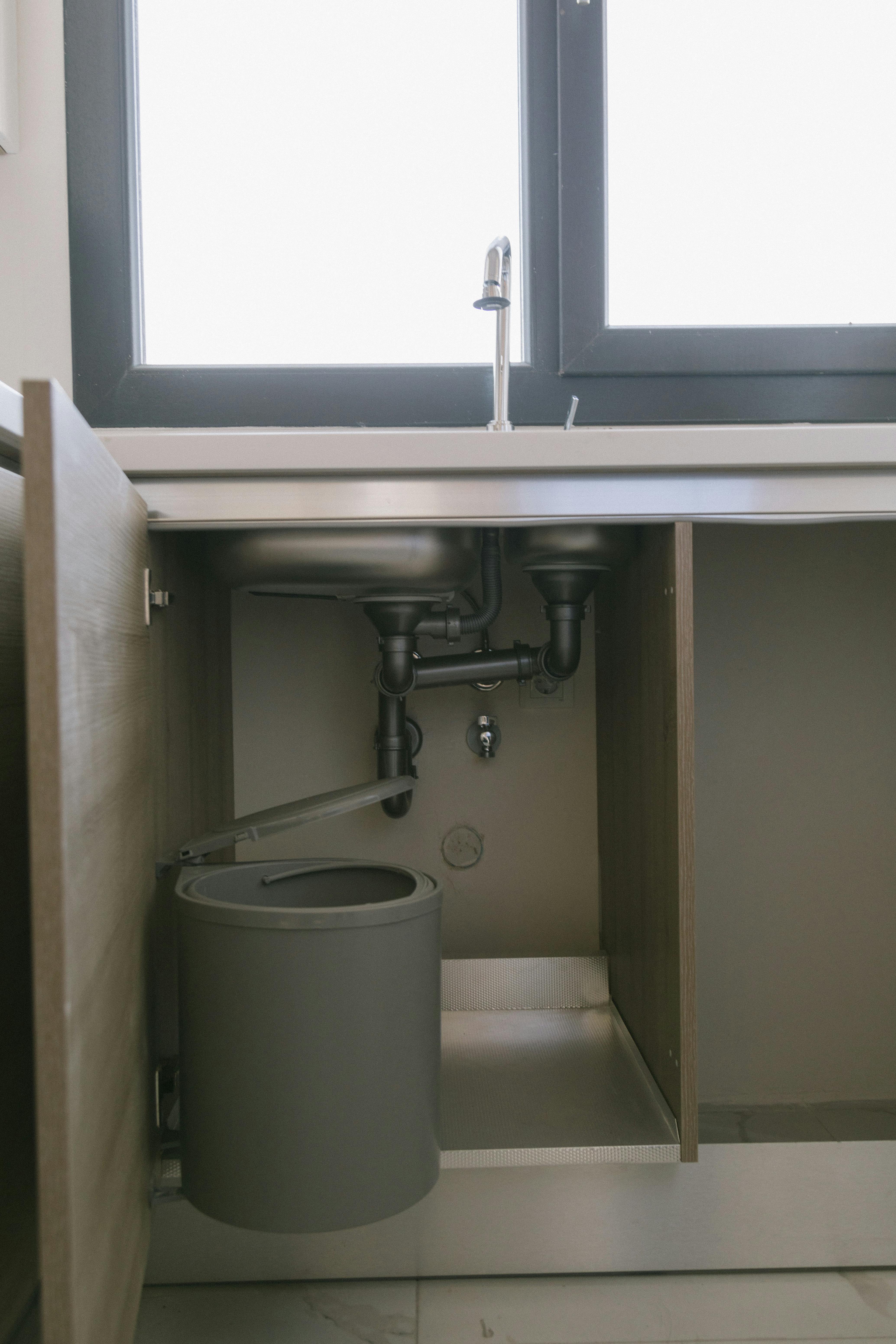Are you tired of sluggish performance on your Windows 11 PC? Quick Windows 11 hibernation file disable might just be the game-changing solution you need! In this article, we’ll dive into the ins and outs of disabling the hibernation file, unlocking enhanced performance, and freeing up precious disk space. Many users are unaware that the hibernation feature, while useful, can sometimes hinder overall system speed. By disabling it, you can experience faster boot times and a more responsive interface.
Wondering how to get started? The process is simpler than you think! With just a few clicks, you can quickly disable hibernation and reclaim valuable resources on your device. Imagine having more space for your favorite applications and files, all while enjoying a snappier system. It’s time to cut the clutter and optimize your computing experience!
In this guide, we’ll provide step-by-step instructions and helpful tips to ensure you can efficiently disable the hibernation file without any hassle. Whether you’re a tech novice or a seasoned pro, our easy-to-follow approach will make the process seamless. Plus, we’ll explore the potential benefits of freeing up that storage and improving your system’s performance. Ready to unlock the full potential of your Windows 11 device? Let’s get started on this journey to a faster, more efficient computing experience!
7 Simple Steps to Disable Windows 11 Hibernation File for Boosted System Speed

In the fast-paced world of technology, every little tweak can make a big difference. Windows 11, while being a powerful operating system, comes with features that could slow down performance, like the hibernation file. Disabling this file can lead to enhanced speed and efficiency. In this article, we’ll explore 7 simple steps to disable the Windows 11 hibernation file. So buckle up and let’s get started on unlocking that boosted system speed!
Why Disable the Hibernation File?
Hibernation is a feature that allows your computer to save the current state and power down completely. But here’s the catch: it creates a hibernation file, which can occupy a significant amount of disk space. This can lead to slower performance over time. If you don’t use hibernation, disabling it can free up resources and improve your system’s speed.
Steps to Disable Windows 11 Hibernation File
-
Open Command Prompt with Admin Rights
- Click on the Start button, type in “Command Prompt”.
- Right-click on it and select “Run as administrator”.
- This step is crucial, as you need administrative privileges for the following commands.
-
Check Current Hibernation Status
- Type the command
powercfg /hibernate queryand press Enter. - This will show you if hibernation is enabled or not.
- Type the command
-
Disable Hibernation
- Now, type
powercfg /hibernate offand hit Enter. - This command will disable hibernation, and the hibernation file will be deleted automatically.
- Now, type
-
Verify the Change
- Once again type
powercfg /hibernate query. - If it tells you that hibernation is disabled, you’re on the right track!
- Once again type
-
Delete the Hibernation File Manually (if necessary)
- Sometimes, the hibernation file might linger. Go to the C: drive, and check for a file named
hiberfil.sys. - If it’s still there, you can delete it manually. Just remember that this file is hidden, so you may need to change folder settings to view hidden files.
- Sometimes, the hibernation file might linger. Go to the C: drive, and check for a file named
-
Restart Your Computer
- A restart is always a good idea to ensure that all changes take effect.
- After rebooting, check your system performance to see if there is an improvement.
-
Monitor System Performance
- Use tools like Task Manager to observe CPU and memory usage.
- If you’ve done everything correctly, you should notice a snappier interface and quicker response times.
Benefits of Disabling Hibernation
- Frees Up Disk Space: The hibernation file can be quite large, sometimes several gigabytes.
- Improves Boot Times: Your system might boot faster without the hibernation process.
- Reduces Disk Fragmentation: Less reliance on the hibernation file means less fragmentation over time.
Quick Tips for Enhanced Performance
- Regularly clean up your disk using Disk Cleanup tool.
- Keep your Windows updated to ensure you have the latest performance improvements.
- Consider upgrading your RAM if you’re still facing slowdowns.
By following these steps, you can quickly disable the Windows 11 hibernation file and unlock enhanced performance. Getting the most out of your system doesn’t have to be complicated. With just a few minor adjustments, you could be on your way to a faster, more efficient computing experience. So why wait? Start optimizing your Windows 11 system today!
Is Your Windows 11 Running Slow? Uncover the Benefits of Disabling Hibernation Files

Is your Windows 11 running slow? If you’ve noticed your computer taking longer to boot up or applications lagging, it might be time to take a closer look at your system settings. One of the often-overlooked settings is the hibernation file. Disabling hibernation can free up space and enhance performance, especially if you don’t use this feature. Let’s dive into how hibernation works and how to disable it for a speedier experience.
Understanding Hibernation in Windows 11
Hibernation is a power-saving feature that allows your computer to save the current session and power off completely. When you turn it back on, you can resume exactly where you left off. Great feature, right? But, it can also slow down your system. Here’s why:
- Space Consumption: The hibernation file, named hiberfil.sys, can take up several gigabytes of disk space.
- Performance Impact: Even when not in use, the presence of this file can slightly affect system performance.
- Not for Everyone: Many users prefer shutting down or using sleep mode, making hibernation unnecessary.
Benefits of Disabling Hibernation Files
Disabling hibernation might not be for everyone, but those looking for enhanced performance can see some real benefits. Here are a few reasons why you might consider this:
- Free Up Disk Space: By disabling hibernation, you can reclaim significant space on your hard drive, which is crucial for overall system performance.
- Faster Boot Times: Without the hibernation file, your boot process can be quicker, since your system won’t have to load the saved session.
- Improved Performance: With fewer files to manage, your system can operate more smoothly, especially on older hardware.
Quick Windows 11 Hibernation File Disable
Disabling hibernation in Windows 11 is a straightforward process. Here’s how you can do it in just a few steps:
- Open Command Prompt: Type “cmd” in the search bar, right-click on Command Prompt, and select “Run as administrator.”
- Input the Command: Type
powercfg.exe /hibernate offand hit Enter. This command disables hibernation and removes the hibernation file from your system. - Check for Changes: You can verify that hibernation is disabled by typing
powercfg.exe /a. This shows you the available sleep states on your device.
Quick Tips for Enhanced Performance
Here’s a quick list of additional tips to unlock enhanced performance on your Windows 11 system:
- Uninstall Unused Programs: Clear out programs you don’t use. They take up space and can slow down your computer.
- Disable Startup Programs: Limit the number of applications that launch at startup. This can significantly reduce boot time.
- Regular Updates: Always keep your system updated to ensure it runs efficiently.
- Disk Cleanup: Use the built-in Disk Cleanup tool to remove temporary files and other unnecessary data.
Most users don’t realize how much hibernation can impact their system’s performance until they disable it. If you’re looking for a smoother experience, consider disabling this feature. You might be surprised at the difference it can make.
While hibernation can be beneficial for some, many users find they don’t need it. If you find yourself in the latter group, disabling the hibernation file could free up valuable resources and help your Windows 11 device run more efficiently.
The Ultimate Guide to Windows 11 Hibernation: Should You Disable It for Better Performance?

Windows 11 brings a lot of new features, and hibernation is one of them. But have you ever wonder if keeping hibernation enabled is really a good idea? This guide dives into the hibernation feature in Windows 11, and whether you should think about disabling it for better performance.
What is Windows 11 Hibernation?
Hibernation is a power-saving state that allows your computer to save the current session, including open files and applications, to the hard drive. When you hibernate your PC, it uses less power compared to sleep mode. It’s like shutting down but with a twist: you can pick up right where you left off when you turn your computer back on.
- Benefits of Hibernation:
- Saves open applications and files.
- Uses less power than sleep mode.
- Quick resume time.
Should You Disable Hibernation?
Now, the real question is: should you disable hibernation? Some people say yes, claiming that it can improve overall performance. But is that true? Here are some reasons to think about disabling hibernation:
- Disk Space Utilization: Hibernation creates a file called hiberfil.sys on your hard drive. This file can take up a significant amount of space, especially if you have limited storage.
- Performance Issues: Some users report system slowdowns when hibernation is enabled. This could be due to the extra file management required.
- Boot Time: If you don’t use hibernation, your boot time may improve since the system won’t need to read from the hibernation file.
Quick Windows 11 Hibernation File Disable: How to Do It
Disabling hibernation in Windows 11 is a simple process. Just follow these steps:
- Open Command Prompt: Search for “cmd” in the start menu, right-click, and select “Run as administrator.”
- Enter Command: Type
powercfg /h offand press Enter. This command disables hibernation and deletes the hibernation file. - Check Results: To ensure it worked, you can type
powercfg /ato check the available sleep states.
Unlock Enhanced Performance
By disabling hibernation, you might notice a boost in performance. You can free up disk space and potentially speed up your computer’s boot time. However, it’s important to weigh the pros and cons based on your usage.
Hibernation vs Sleep: A Quick Comparison
| Feature | Hibernation | Sleep |
|---|---|---|
| Power Usage | Very Low | Low |
| Resume Time | Longer | Shorter |
| Disk Space | Requires hiberfil.sys | No extra space needed |
When to Keep Hibernation Enabled
Despite the potential benefits of disabling hibernation, there are cases where you might want to keep it:
- Frequent Use of Applications: If you often have many applications open and need to quickly return to them, keeping hibernation can be beneficial.
- Laptops and Portables: For laptops, hibernation can be a lifesaver when you need to save battery without losing your progress.
In the end, the decision to disable hibernation or not really depends on your individual needs and how you use your Windows 11 device. If you prioritize performance and disk space, disabling may be the way to go. But if you value convenience, hibernation can be a handy feature. Just remember, there’s no one-size-fits-all answer; it’s all about finding what works best for you.
Maximize Your Windows 11 Efficiency: 5 Reasons to Disable the Hibernation File Today

Maximizing your Windows 11 efficiency is crucial for a seamless computing experience. One often overlooked aspect is the hibernation file, which can take up significant space on your drive and slow down your system. Disabling this file can unlock enhanced performance. Here are five compelling reasons to disable the hibernation file today.
1. Free Up Valuable Disk Space
When you enable hibernation, Windows creates a hibernation file (hiberfil.sys) that stores the current state of your system. This file can be quite large, taking up several gigabytes of space. By disabling hibernation, you can reclaim that space for applications or files you might need. For example:
- Typical size of hibernation file: Usually around 75% of your RAM size.
- Potential savings: If your computer has 16 GB of RAM, that’s 12 GB of disk space freed up!
2. Boost System Performance
Disabling the hibernation file can lead to better performance for your system. Hibernation can slow down boot times and overall system responsiveness. When you disable it, Windows doesn’t need to manage this file, which can make your computer feel snappier. Users have reported an increase in speed after disabling this feature, especially on older machines.
3. Reduce Power Consumption
While hibernation is designed to save power by shutting down your PC without closing applications, it can also lead to unnecessary power usage if enabled by mistake. Disabling the hibernation file can help ensure that your system is in a true shutdown state when not in use. This small action can contribute to energy savings, especially for laptops and other portable devices.
4. Simplify System Management
Managing your computer’s resources is easier when you know exactly what’s running. Hibernation can complicate things, especially if you’re troubleshooting issues. Disabling the hibernation file means you can simplify your system management. You can avoid confusion over whether your PC is in a hibernated state or fully shut down.
5. Enhance Security
Hibernation files can pose a security risk, as they store sensitive data from your sessions. If someone gains access to your hard drive, they could potentially extract information from the hibernation file. Disabling it helps protect your privacy and sensitive data from unauthorized access. This can be particularly important for business users who handle confidential information.
Quick Windows 11 Hibernation File Disable: How-To
Disabling the hibernation file is a simple process. Follow these steps:
- Open Command Prompt as Admin: Search for “cmd” in the Start menu, right-click, and select “Run as administrator.”
- Enter the Command: Type
powercfg -h offand hit Enter. This command disables hibernation and deletes the hibernation file. - Verify: You can check the C drive for the hiberfil.sys file to confirm it’s gone.
Comparison of Power States
| Power State | Description | Disk Usage |
|---|---|---|
| Sleep | Low power, quick resume | Minimal |
| Hibernation | Saves session to disk, uses more power | Large file created |
| Shut Down | Fully off, no power usage | No file needed |
Disabling the hibernation file in Windows 11 is a small tweak that can lead to noticeable improvements in performance and efficiency. Embrace the enhanced speed and freed-up space by taking this quick action. In today’s fast-paced digital world, every little bit counts, and optimizing your system can make a big difference!
Curious About Hibernation in Windows 11? Here’s How Disabling It Can Save You Storage Space!

Curious About Hibernation in Windows 11? Here’s How Disabling It Can Save You Storage Space!
Windows 11, the latest operating system from Microsoft, brings a lot of new features and improvements. One interesting aspect of it is the hibernation mode, which allows your PC to save the current state and turn off completely, saving power. But, you know, this feature can eat up a significant chunk of storage space on your device. If you’re curious about hibernation in Windows 11 and want to know how disabling it can help save your storage space, you’re in the right place!
What is Hibernation?
Hibernation is a power-saving state designed for laptops and desktops. It saves all your open documents and applications to a file on your hard drive, allowing you to turn off your PC without losing anything. When you turn it back on, it loads everything back up. However, this hibernation file, named hiberfil.sys, can take a lot of space, sometimes several gigabytes, depending on how much RAM your computer has.
Why Disable Hibernation?
There are several reasons you might consider disabling hibernation on your Windows 11 machine. Here are some of them:
- Free Up Storage Space: If you’re low on disk space, disabling hibernation can recover several gigabytes.
- Improve Performance: Sometimes, having a hibernation file can slow down your system, especially if your hard drive is almost full.
- Customization: Many users don’t use hibernation and prefer shutting down or using sleep mode, making hibernation unnecessary.
Quick Windows 11 Hibernation File Disable: How to Do It
Disabling hibernation on Windows 11 is straightforward and can be done in just a few steps. Here’s a quick guide:
-
Open Command Prompt as Administrator:
- Press Windows key + X, then select “Windows Terminal (Admin)” or “Command Prompt (Admin).”
-
Type the Command:
- Enter the command
powercfg /hibernate offand hit Enter. - This command will disable hibernation and remove the hibernation file from your system.
- Enter the command
-
Verify the Change:
- You can check if it’s disabled by typing
powercfg /ain the Command Prompt. It should show hibernation as unavailable.
- You can check if it’s disabled by typing
-
Restart Your Computer:
- For the changes to take effect, it’s often good practice to restart your machine.
What Happens After Disabling Hibernation?
After disabling hibernation, you will no longer have the option to hibernate your system. Instead, you can utilize sleep or shut down your computer as usual. If you ever decide you want hibernation back, you can enable it again by running the command powercfg /hibernate on.
What to Consider Before Disabling?
- Usage Patterns: If you regularly leave your programs open and need to resume work quickly, hibernation can be beneficial.
- Storage Needs: Evaluate how much storage you really need. If your system has ample space, then maybe hibernation isn’t a big deal.
In Summary
Disabling the hibernation feature in Windows 11 can indeed save you storage space and potentially enhance system performance. It’s a simple process that doesn’t require much technical know-how. Just remember, if you ever miss the feature, you can always turn it back on. So, if you’re looking to streamline your Windows 11 experience, consider giving this a try!
Conclusion
In conclusion, disabling the hibernation file in Windows 11 can be a useful step for users looking to free up disk space and streamline their system’s performance. We explored the benefits of this action, including increased storage capacity and potentially improved boot times, especially for those who rarely utilize the hibernation feature. By following the straightforward command line instructions, users can easily disable hibernation and reclaim valuable disk space. However, it’s essential to weigh this decision against the convenience hibernation offers for quickly resuming work. For those who prioritize performance and storage over hibernation functionality, taking this step can lead to a more efficient computing experience. If you found this guide helpful, consider sharing it with others who may benefit from optimizing their Windows 11 systems. Stay informed and make the most of your technology!

